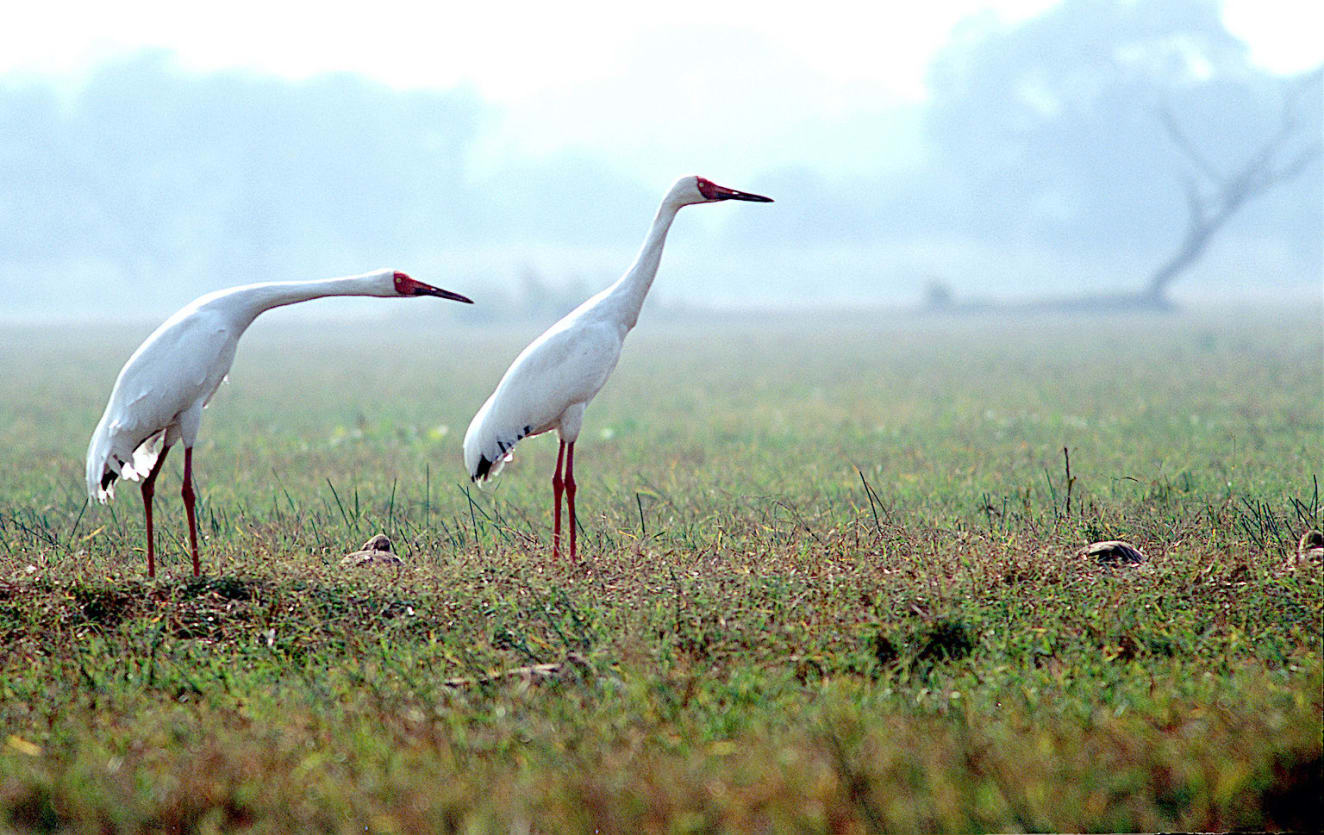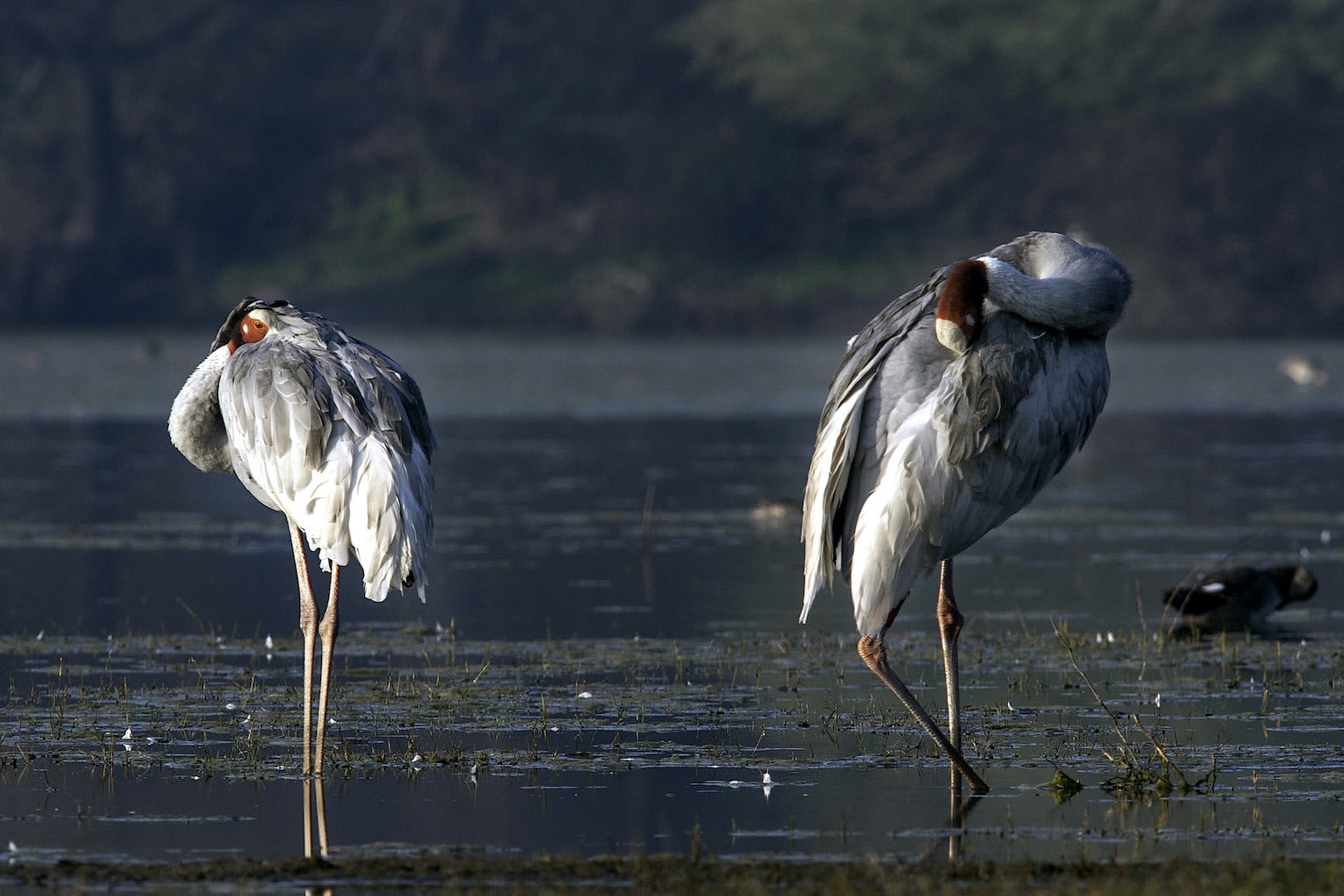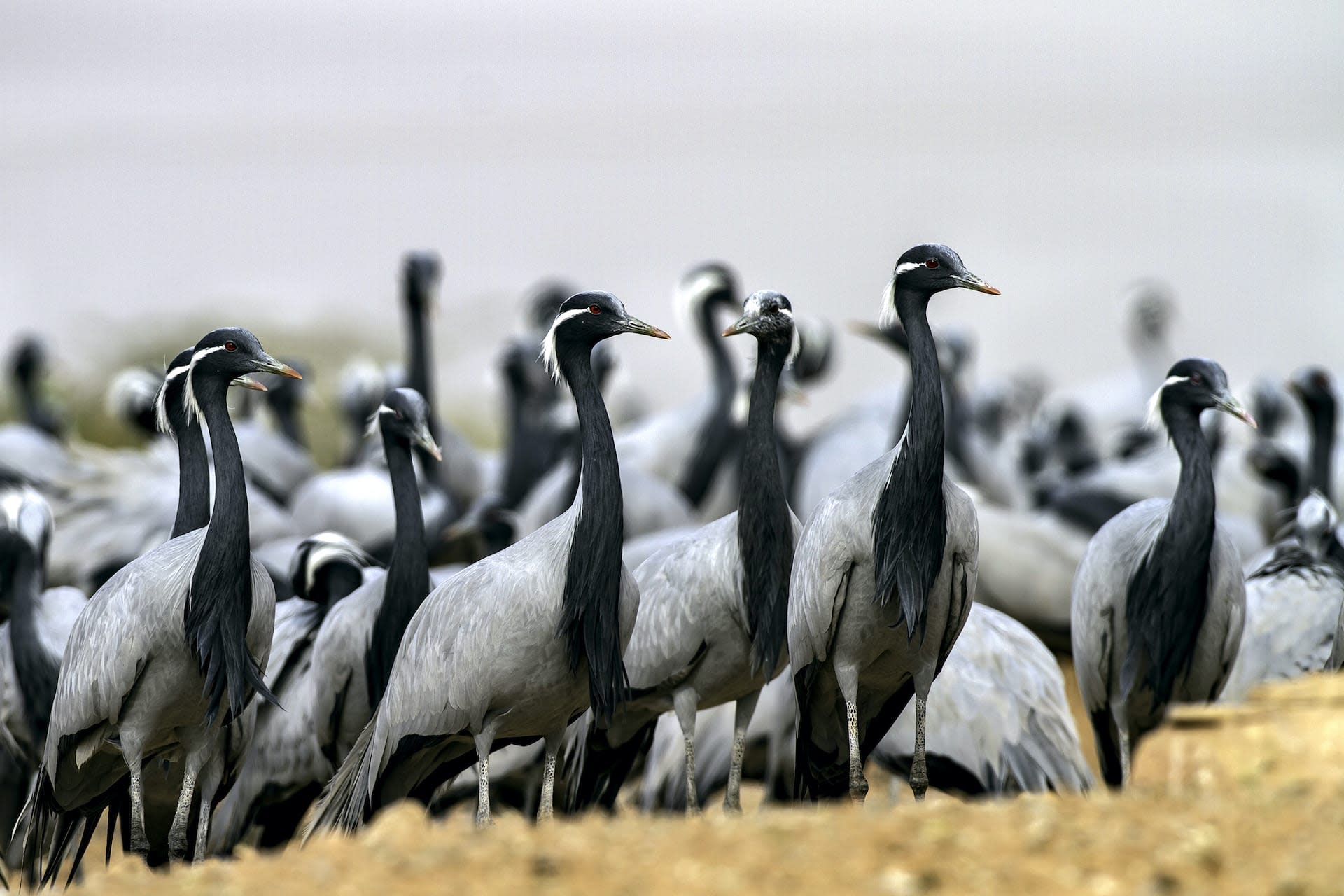 Listen to this article
•
15:34 min
Listen to this article
•
15:34 min
Cranes are often seen as symbols of unconditional love, devotion, and good fortune. It is said that Valmiki’s Ramayana was born out of his grief at witnessing the killing of a male sarus crane by a hunter. Cranes are known to “bond for life” and therefore depicted in literature and mythology as creatures of marital virtue. These large birds are totally dependent on wetlands and thus greatly affected by climate change, loss of habitat, changing agricultural practices, and anthropogenic pressures.
In India, we have historically seen five species of cranes out of the fifteen found worldwide. Siberian cranes, common cranes (also called Eurasian cranes), and Demoiselle cranes were all winter visitors to India. While the latter two still winter in India, their future is uncertain as they face numerous challenges.
Siberian cranes are locally extinct in India. The last pair was seen at the Bharatpur wetlands in 2002. The fourth species, the black-necked cranes, breed at the Changthang Plateau of Eastern Ladakh and winters in Bhutan and a few places in Arunachal Pradesh. And finally, the Sarus cranes, the tallest flying birds in the world, are found in the North and Northwestern parts of the country as well as in some parts of Central India. Both the Black-necked and the Sarus cranes are under threat.
The survival of these charismatic cranes of India has always revolved around community involvement and wetland protection. The persistence of breeding populations also depends on the protection of their nests and feeding grounds from free-ranging dogs and human threats. With one species already locally extinct, one hopes that we can learn from the past and protect the remaining four species from following the same path. And if we sincerely protect our wetlands, we may still get the Siberian cranes to return to their wintering grounds in the future.

One of the reasons proposed for this decline is that their migratory route to India runs through a war zone in Afghanistan, which has disturbed the migration pattern over the last two decades. This is a strong example of how important the conservation of migratory routes of birds is to their survival. We do not know if this Western population will survive, as their numbers may have gone below the recovery point.
Only a few thousand birds remain from the Eastern population of Siberian cranes, which breed in Northeastern Siberia and winter in Southeast China. All hope lies with conservation measures in Russia and China to preserve the Eastern population.

Common cranes, seen here with juveniles (top left) can be observed and photographed in the Little Rann of Kutch quite easily. Though demoiselle cranes are the most photographed in India, as a photographer, I find common cranes (top left and right) with their black-and-white patterned head and small red crown patch
more interesting and photogenic.
Kheechan in Rajasthan is well known for observing and photographing demoiselle cranes (above right and left). There you can also see remarkable community involvement in their feeding.











